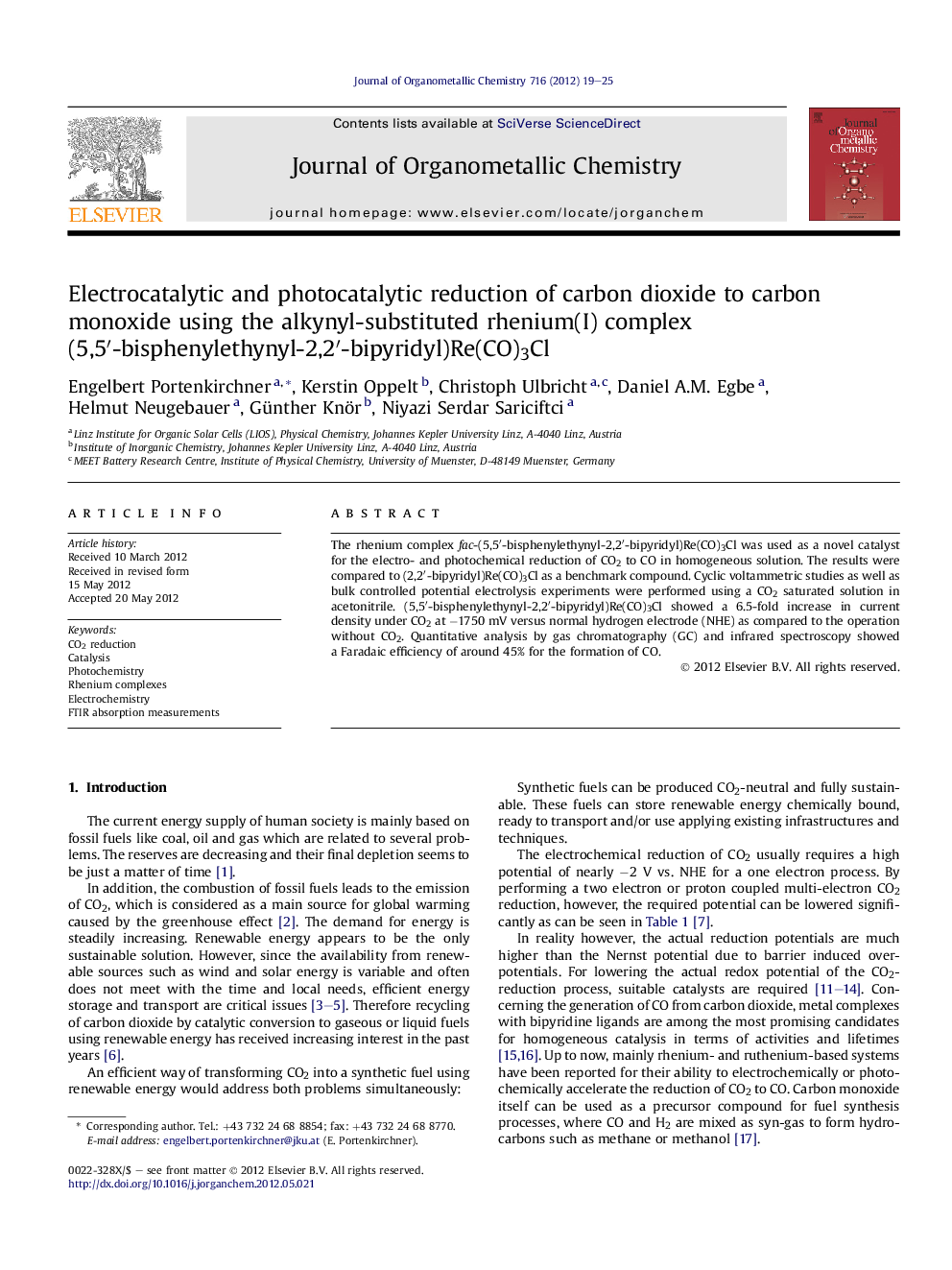| Article ID | Journal | Published Year | Pages | File Type |
|---|---|---|---|---|
| 1324715 | Journal of Organometallic Chemistry | 2012 | 7 Pages |
The rhenium complex fac-(5,5′-bisphenylethynyl-2,2′-bipyridyl)Re(CO)3Cl was used as a novel catalyst for the electro- and photochemical reduction of CO2 to CO in homogeneous solution. The results were compared to (2,2′-bipyridyl)Re(CO)3Cl as a benchmark compound. Cyclic voltammetric studies as well as bulk controlled potential electrolysis experiments were performed using a CO2 saturated solution in acetonitrile. (5,5′-bisphenylethynyl-2,2′-bipyridyl)Re(CO)3Cl showed a 6.5-fold increase in current density under CO2 at −1750 mV versus normal hydrogen electrode (NHE) as compared to the operation without CO2. Quantitative analysis by gas chromatography (GC) and infrared spectroscopy showed a Faradaic efficiency of around 45% for the formation of CO.
Graphical abstractThe rhenium complex fac-(5,5′-bisphenylethynyl-2,2′-bipyridyl)Re(CO)3Cl was used as a novel catalyst for the electro- and photochemical reduction of CO2 to CO in homogeneous solution. Under CO2 a 6.5-fold increase in current density at −1750 mV (vs. NHE) was observed.Figure optionsDownload full-size imageDownload as PowerPoint slideHighlights► fac-(5,5′-bisphenylethynyl-2,2′-bipyridyl)Re(CO)3Cl was used for CO2 reduction. ► The novel compound showed a 6.5-fold increase in current density under CO2. ► More positive reduction potential compared to the benchmark compound was observed. ► The compound has an estimated high rate constant of about 220 M−1 s−1. ► Infrared difference absorption spectra were performed for headspace gas analysis.
